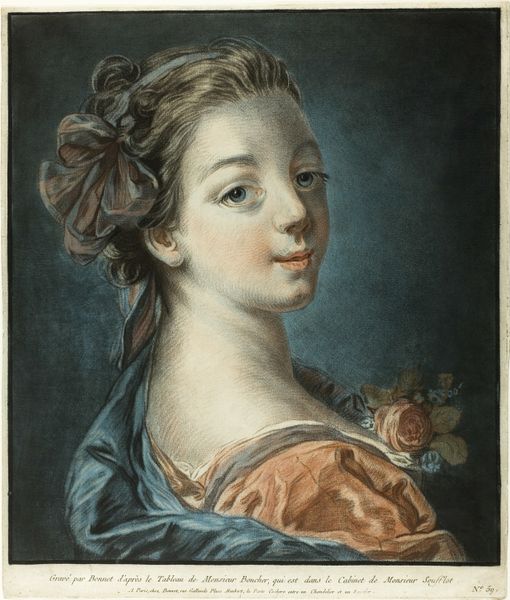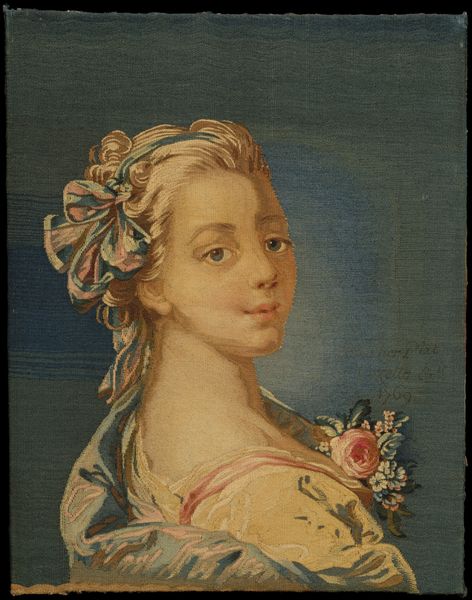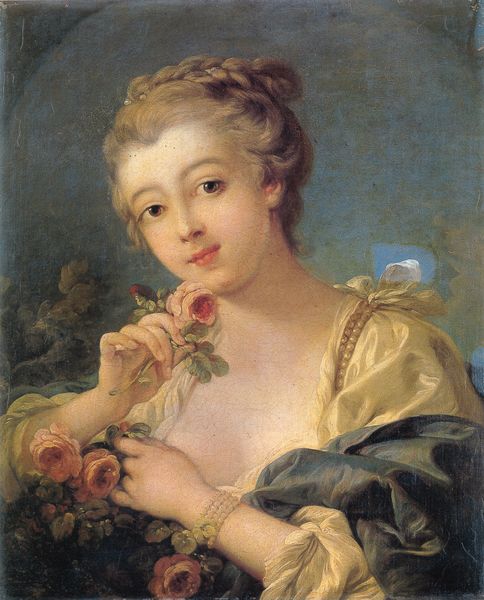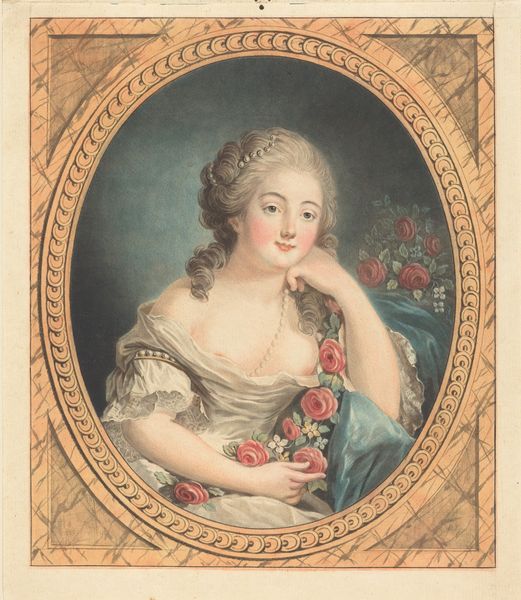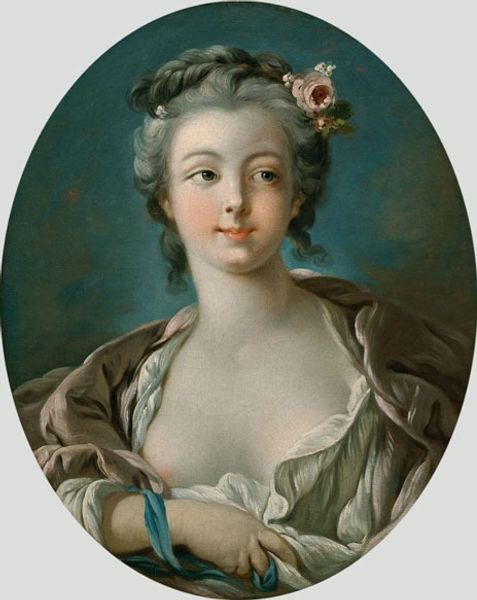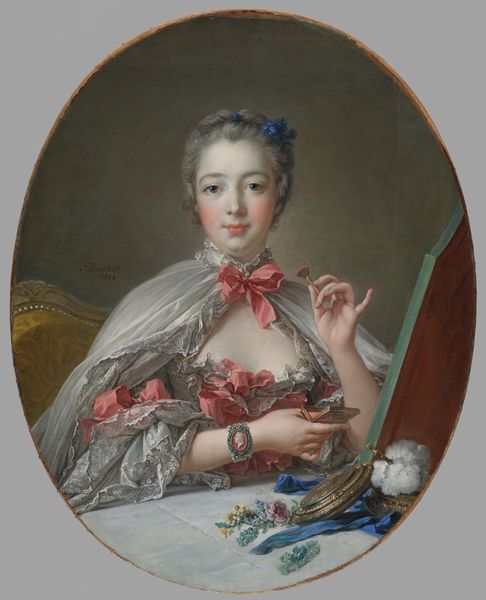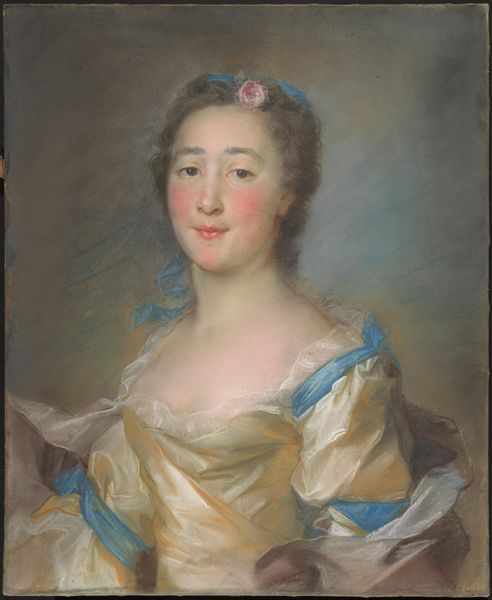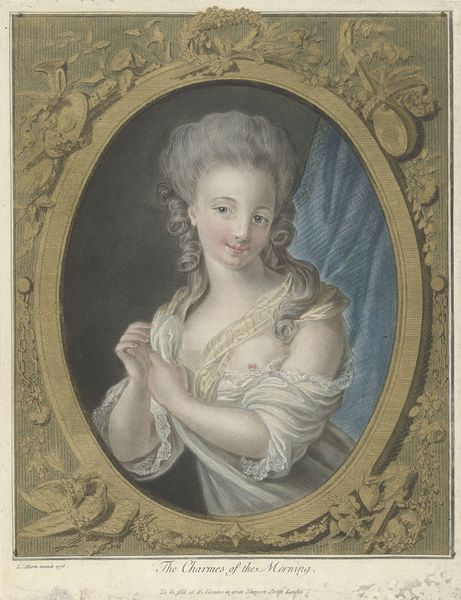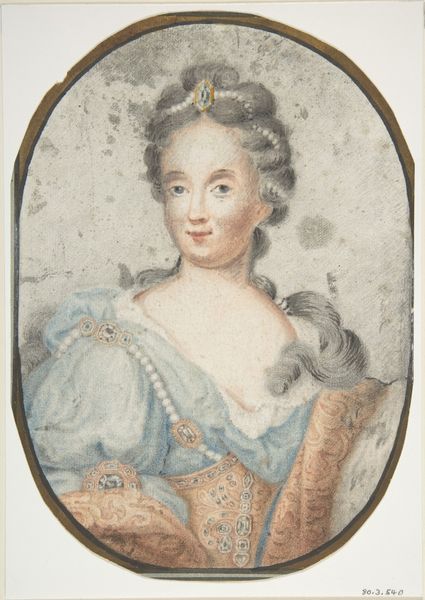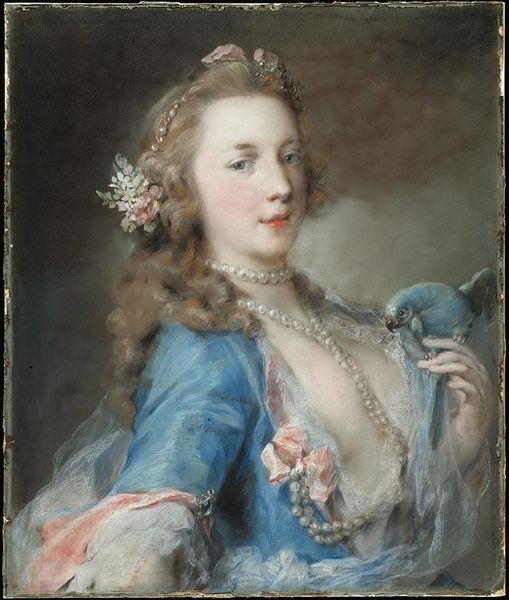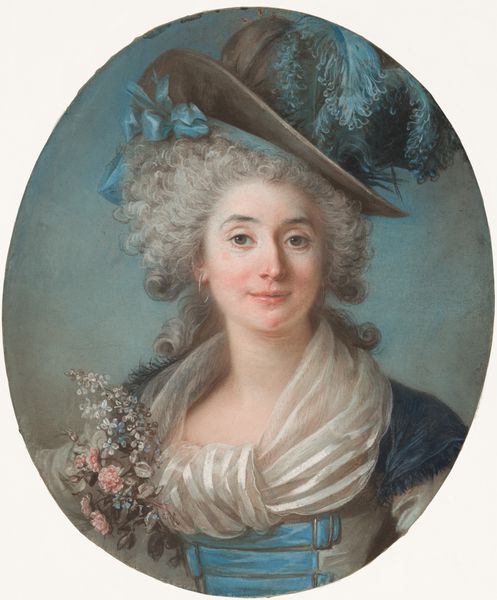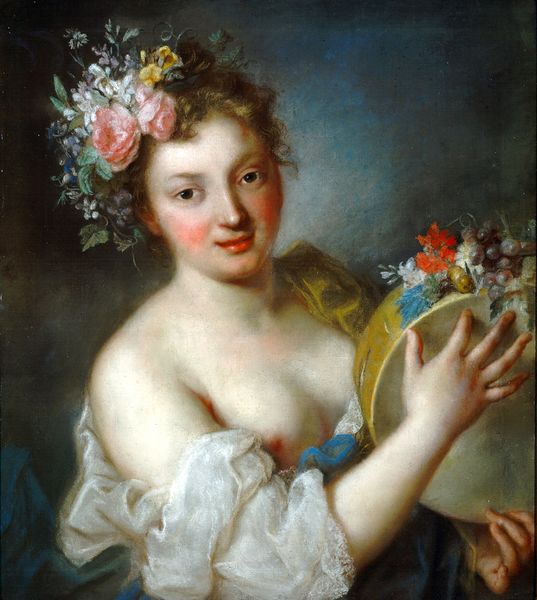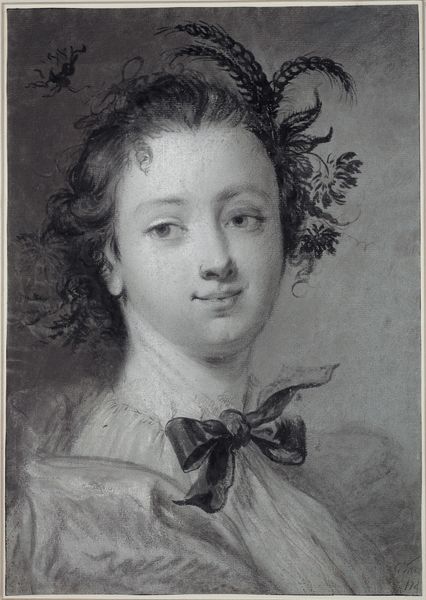
Dimensions: 407 × 325 mm (image); 428 × 345 mm (sheet)
Copyright: Public Domain
Curator: She seems very poised, a little coy maybe, but overall just breathtaking. It’s like catching a glimpse into a secret garden. Editor: You’ve zeroed right in on that fleeting feeling! What we’re looking at here is Louis Marin Bonnet’s "Head of Flora", etched sometime in 1769. Curator: "Flora" eh? So not just a pretty face. How interesting. Beyond her beauty, she seems to represent ideas of youth and Spring, even beauty. This archetypal woman adorned with flora embodies a specific time; maybe even a set of values. Editor: Precisely! The Rococo style, deeply embedded in French culture, favoured themes like this— celebrating love, nature, and aristocratic leisure. Her direct gaze breaks with convention; it's unusually engaging. It speaks to the dawn of the Romantic movement where inner feelings were given external expression. Curator: What's striking to me is the color work achieved through etching. The delicacy feels distinctly feminine but that isn’t entirely positive. How can it claim connection to history when there’s such an obvious sense of privilege imbued within? Editor: It does straddle this line, doesn’t it? The sweetness can easily become saccharine, which reflects a key tension within Rococo art. And yes, it very much serves a patron class. But etching here, though reproductive in function, allows for subtle tonal modulations, elevating what could have been just a pretty picture into something far more… delicate. The romantic movement adopted the delicate femininity portrayed here while completely eschewing those displays of power and privilege that once lay beneath them. Curator: Indeed, looking again, the softness of the etching captures a particular type of ethereal beauty— the kind that acknowledges its own fragility. So much history within a single artwork. It’s fascinating. Editor: Agreed! It makes me think about the endurance of certain archetypes and what it means to return to those again and again. I guess it just goes to show what is captured at that perfect moment, even in art, has resonance through the ages.
Comments
No comments
Be the first to comment and join the conversation on the ultimate creative platform.
